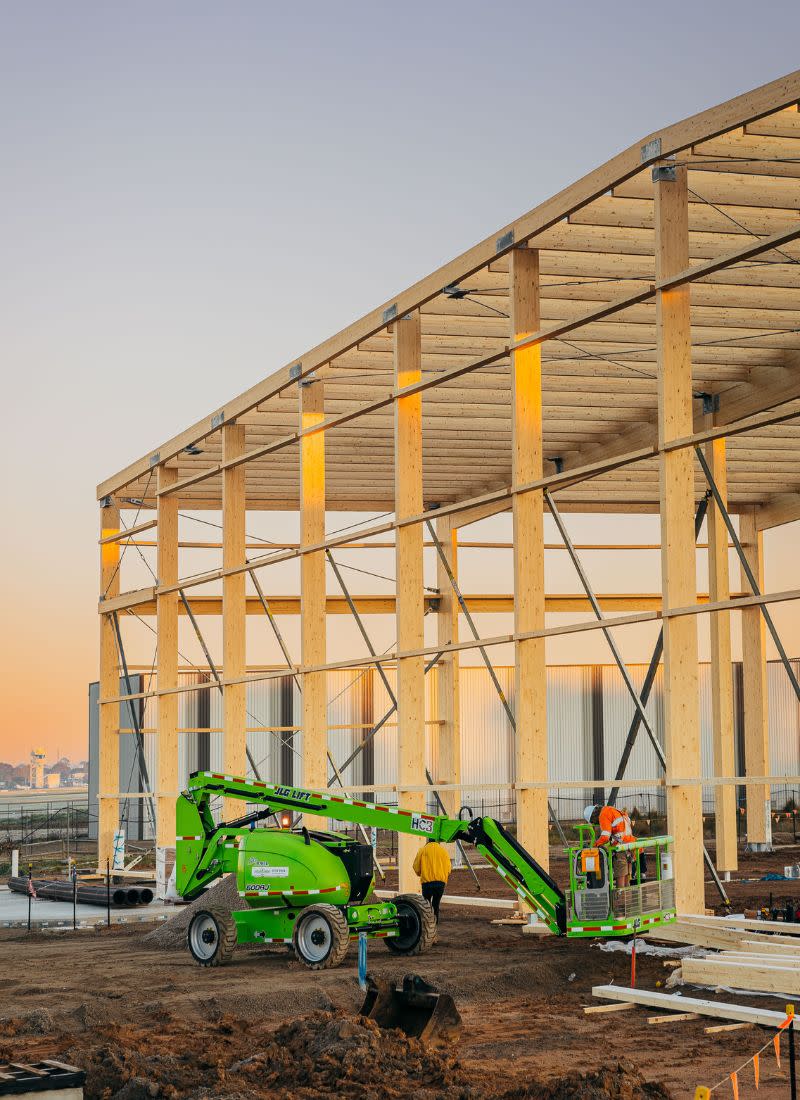Goodman Pilots Region’s First Mass-Timber Warehouse

Goodman has begun building a timber warehouse development at Moorabbin Airport, south of Melbourne—the first time the Sydney-based global industrial property group has trialled mass timber construction in the Asia-Pacific.
The construction, at Mentone about 23km south-east from the Melbourne CBD, will use about 630 tonnes of certified, sustainably sourced timber for the four flexible warehouse units totalling 15,600 square metres.
Goodman said it expected the mass timber construction to cut the project’s embodied carbon by about 24 per cent, compared to conventional steel structures, while still retaining structural integrity.
The development—at the eastern end of Boundary Road within the Moorabbin Airport Master Plan—will also include a 400kW rooftop solar array, eight electric-vehicle charging station, and smart metering to monitor and manage energy consumption.
The $285-million masterplan will include new and upgraded training sites, 10,000sq m of additional apron pavement, and provisions for sustainable aviation initiatives such as electric and hydrogen power. The airport says the plan will generate a 38 per cent increase in economic benefit each year by 2029.
Goodman chief executive Jason Little said, “In delivering essential infrastructure for the digital economy, one of our priorities is to trial products and construction methods that are low-carbon, resilient, and provide positive outcomes for our customers who are looking to achieve their own sustainability objectives.
“This pilot project is a great example of ways we’re exploring innovation, sustainability, and flexibility.”
Moorabbin Airport chief executive Paul Ferguson said the aerodrome was actively working to reduce their environmental footprint.
“We’ve installed 1700kW of solar, rainwater tanks for water capture and recycling, and maintain 2000 drought tolerant trees since 2015,” he said.
Goodman’s timber construction will generate 175 jobs and is expected to finish by November.

New research by JLL—the global real estate services provider—shows the demand for sustainable warehousing is growing rapidly across Australia.
In data released on July 26, JLL said the trend was being driven by increasing regulatory pressure to lower carbon emissions, growing consumer expectations and accelerating timelines for organisations to meet their net-zero carbon targets.
JLL’s report found 60 of Australia’s biggest 100 logistics and industrial occupiers have net-zero or interim net-zero carbon targets, up from 56 in 2023. There was also a significant increase in occupiers with published quantifiable or material interim targets, doubling from 27 to 54 in the past 12 months.
The study revealed a future net-zero carbon-ready asset market with capitalisation of more than $46 billion. That accounted for about 11.5 million square metres, or about 13 per cent of all stock.
JLL head of strategic research in Australia Annabel McFarlane said industrial owners and occupiers were stepping up their game when it came to cutting emissions.
“They understand that leveraging sustainable real estate practices and optimising the supply chain and transportation are crucial in turning their commitments into tangible results,” she said.














